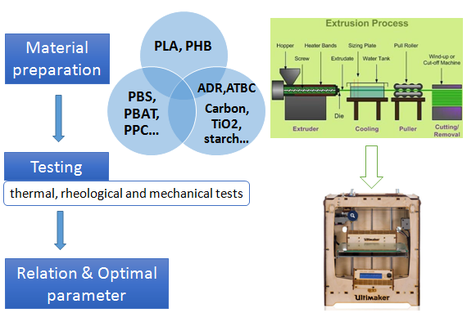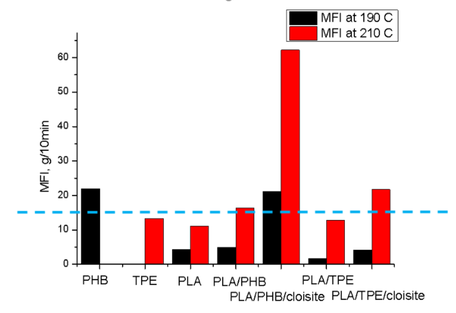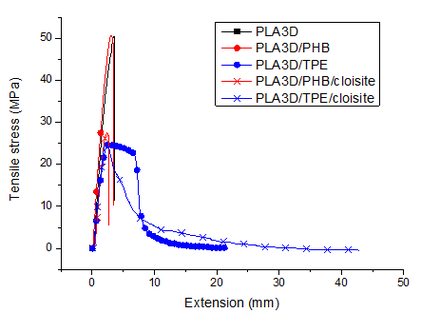Biobased materials for FDM
Generic biobased materials approach to improve and extend 3D Printing materials for extrusion based additive manufacturing
What is it about?
Additive manufacturing (AM) has gained acceptance in many fabrication areas due to the advantages of this technology over conventional manufacturing methods, i.e. fabricate parts with complex geometries, rapid design, lower amount of waste. However, on the one hand, a rather limited range of polymers has been successfully processed and developed for AM applications compare to conventional extrusion and injection molding techniques. On the other hand, the lack of understanding of the relation between the polymer processing conditions and the final material behavior (e.g. strength, transparency, and durability) during the AM process limits the application of the printed parts.
General objective of the research
In this project, 1) new biobased thermoplastic composites is to be developed for 3D printing; 2) make clear the relation between the polymer processing conditions and the final material behavior; 3) improve the AM processing technique and enlarge production scale of 3D printing.
Within this research work, new innovative PLA-based biopolymer blends will be developed, which afterwards will be applied to produce AM final parts. These PLA blends are made from both the type of thermoplastic (PLA) and additives (such as nucleating agents, plasticizers and fibre fillers), depending on their needs within the rheology, solidification and shrinkage behavior as for AM extrusion based applications. This allows aiming for a good material structure during (rheology) and after (solidification and shrinkage) AM processing. As for PLA, it is expected a blend of PLLA and PDLA will be needed. The structure of the polymer, and also its molecular mass, has a great influence on the final properties of the material. As to improve the impact strength and rheology, it is suggested to apply plasticizers such as acetyltributylcitrate (ATBC) and glucose-mono-esters. Nucleating agents such as minerals will improve the crystallization percentage of the PLA blend. Finally, a combination of compatibilizers and fiber fillers will improve aspects such as brittleness. Once the PLA blends have been produced, thermal, rheological and mechanical tests will be done to see how modeling coincides with the test results. Once these blends have been developed and characterized, they will be tested at laboratory scale for both strength and mechanical integrity of the composite structures during and after 3D Printing. Light and electron microscopy (SEM, TEM) will be used for close observation of the 3D printing (solidification), reinforcements and distribution, possible transcrystallinity effects that could influence mechanical behaviour. Possible chemical changes at the matrix-fibre reinforcements and within the inner layer structure of the additive processing will be analysed by means of FT-IR microscopy in transmission and ATR modes.
Optical picture of pure PLA sample printed with 100% infill rate (shell position and inner position)
Melt flow index of PLA and its blends, material can be well printed when MFI is above 10g/10min.
Tensile curve of PLA and its blends, PHB can not improve the tensile property of PLA but TPE can improve the flexibility of PLA remarkably, with loisite added, elongation of PLA/TPE increased further.
Key publications
Wang, Sisi, Lore Capoen, Dagmar D’hooge, et al. “Can the Melt Flow Index Be Used to Predict the Success of Fused Deposition Modelling of Commercial Poly(lactic Acid) Filaments into 3D Printed Materials?” PLASTICS RUBBER AND COMPOSITES 47.1 (2018): 9–16.
Type of funding and duration
CSC scholarship, 2016-2020
Contact
Coordinator: Prof. Ludwig Cardon


